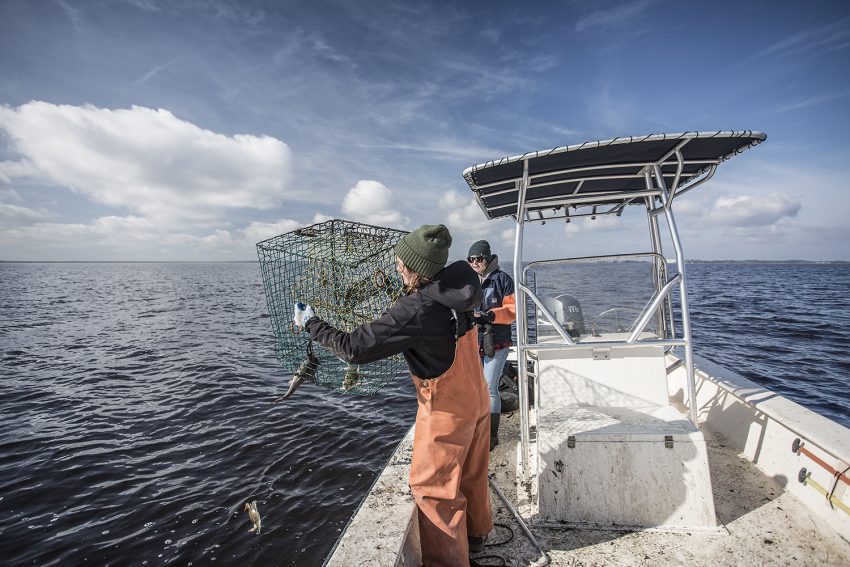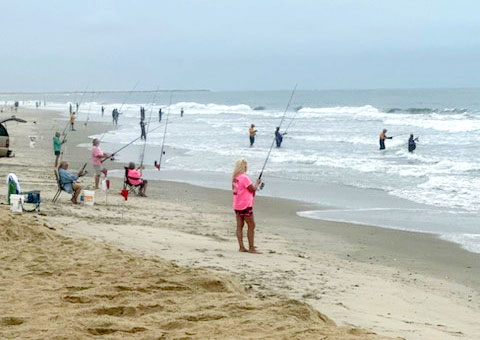Outer Banks Angling: Halfway there
While some would say that the Outer Bank’s primary tourist season runs from Memorial Day to Labor Day, the truth is the busiest weeks for visitors are from June 15 to August 15.
The reason for this is simple — school. There is no set nationwide date for colleges or any other school to return. Some schools return prior to Labor Day and some return after.
No matter what one considers to be the start and end of the busy season, one fact remains — we are halfway there.
Thus far, the summer season has been good for businesses and fishing alike, and we can hope the same for the latter half.
As July pushes on, we should see the gradual opening of some of the seasonal beach closures, as nesting birds wrap up their breeding season. This will mean a little more access to some prime fishing spots, and hopefully this will result in more fish being caught by the surf-fishing crowd.
As of late, sea mullet and pompano have dominated the beach scene on Hatteras and Ocracoke islands.
With places such as Cape Point closed, anglers who would have been focusing their efforts from the beach on bluefish, Spanish mackerel, and albacore have adjusted and are targeting sea mullet and pompano very hard.
This would definitely have a lot to do with so many reports of these fish being caught.
Also, over the past couple of years the “River Rig” has been introduced to the public.
This specialty sea mullet and pompano rig has been around for quite sometime now and was usually used by local fishermen and/or those who mainly targeted these species.
Now it is tied commercially and offered to the public and has helped many a person catch more of these fish in the summer months. You can find them at most local tackle shops.
Citation red drum have made a good showing this summer at Ramp 55 along Hatteras Inlet. This is almost solely a night time bite.
This means one would have to park off the beach and walk to the fishing grounds in order to comply with current night-time beach driving regulations, which require you to be off the sand with your vehicle by 9 p.m.
Visiting one of the local tackle shops can be very helpful if this piques your interest and you have never done it before. They can help you scale down to the bare minimum to make a night-time walk and have what you need to catch fish.
My suggestion is to bring a back pack. Consolidate your drum fishing tackle down to extra rigs, leaders, and weights to easily fit in a pack on your shoulders. Pre-cut your bait and stick it into zippered plastic bags. Then you can use a small, soft cooler that fits into your back pack or over your shoulder.
I’d take two rods. Mishaps with rods and reels are a given when drum fishing. Take two sand spikes to hold your rods and to help with any rigging.
If you take two plastic sand spikes and drill a hole in either the top or bottom of them, they can then be tied together with a little piece of string and also thrown over your shoulder or neck.
This may sound like a lot to be carrying, but if done properly and with the bare minimum, it will be less than you think.
Along with a fair sea mullet and pompano bite, the small spot, croaker, and flounder have helped to keep surf fishermen busy on Hatteras and Ocracoke. Occasionally, puppy drum and speckled trout have been found from the surf.
The piers on Hatteras Island have been managing some spot, croaker, sea mullet, and occasional pompano.
Water temps have averaged between the low to mid 70s
Bluefish and Spanish mackerel have been few and far between on the planks due to a dominant southwest wind.
Rodanthe Pier recently had a couple of small cobia caught, and it’s plausible with a wind shift that the big fish for pin-riggers could heat up on both piers.
Rodanthe Pier recently celebrated a grand opening of a new end on the pier. It has been several years since the end of the pier was torn down by a Thanksgiving storm. A new end is a welcomed addition by the avid pier fishermen.
Offshore fishing out of Hatteras has had its ups and downs because of weather but has been solid overall. Mahi-mahi, wahoo, billfish and king mackerels are making the reports frequently.
The inshore boats continue to do well with slot-limit puppy drum and have managed scattered citation drum and the occasional cobia.
Fleets and recreational boats running out of Oregon Inlet have found big-eye and yellowfin tuna, along with billfish, wahoo, mahi-mahi, and scattered king mackerel.
The inshore boats have done well with speckled trout and puppy drum.
Flounder fishing has been a little slow, but the occasional nice fish makes the reports.
Sheepshead fishing around the Bonner Bridge has been excellent for professional and recreational boats and those fishing from the catwalk. Many a nice size sheepshead has made the dinner table.
So even though we are half way through the summer season, there is plenty to do and fish to be caught. Although finding accommodations can be a little more involved in the busy summer months, one can still find a roof if you do not currently have plans.
You can still get the best and up-to-date fishing info by walking through the door of a local tackle shop. The knowledgeable and eager owners and employees will assist you in catching your target species. They know the where and how at any given moment.
One thing is for sure — you can’t catch a fish while sitting at home.
Go fishing.
(Rob Alderman has lived on the Outer Banks for more than 12 years and has worked in the recreational fishing industry the entire time. A former variety fishing TV show host, beach fishing guide, tackle shop and pier employee, Rob currently owns and operates Outer Banks Kayak Fishing. He is on the Pro-Staff of Bending Branches LLC, Wilderness Systems Kayaks and Release Reels. You can follow his adventures at www.FishMilitia.com or OuterBanksKayakFishing.com.)







